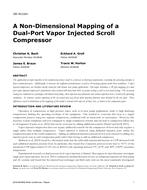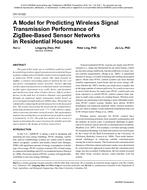According to some estimates, pumps account for between 10% and 20% of world electricity consumption (EERE 2001;Grundfos 2011). Unfortunately, about two-thirds of all pumpsuse up to 60% too much energy (Grundfos 2011), primarily because of inefficient flow control. Varying pump speed using a variable-frequency drive (VFD) on the pump motor is one ofthe most efficient methods of flow control. As a consequence, about one-fifth of all U.S. utilities incentivize VFDs (NCSU2014), and many of these drives control pumping systems.
However, field studies and research show that few variable-flow systems are optimally controlled, and the fraction ofactual to ideal savings is frequently as low as 40% (Kissock2012; Maet al.2015; L.Song, Assistant Professor, Departmentof Mechanical Engineering, University of Oklahoma, pers.comm., July, 2013). Utility incentive programs that rely onideal energy saving calculations could overestimate savings by 30% (Maxwell 2005).
Previous work has shown the importance of changing motor efficiency, VFD efficiency, and pump efficiency on savings (Bernier and Bourret 1999; Maxwell 2005). This work considers the difference between actual and ideal savings caused by excess bypass flow, positions and setpoints of control sensors, and control algorithms. This paper examines the influence of these factors on energy savings using simulations, experimental data, and field measurements. In general, energy savings are increased when bypass is minimized or eliminated, pressure sensors for control are located near the most remote end use, and the pressure control setpoint is minimized.
Citation: 2016 Annual Conference, St. Louis, MO, Transactions 2016, Vol 122 pt. 2
Product Details
- Published:
- 2016
- Number of Pages:
- 8
- Units of Measure:
- Dual
- File Size:
- 1 file , 2.5 MB
- Product Code(s):
- D-ST-16-015


